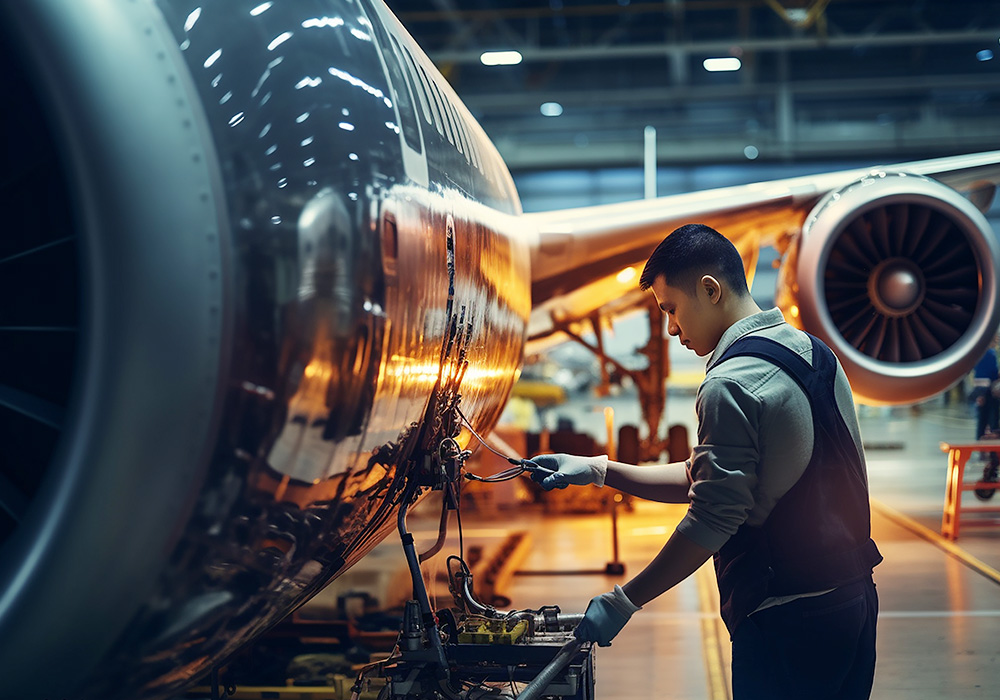
In the field of aerospace engineering, precision and reliability are of utmost importance. Every component, no matter how small, plays a critical role in ensuring the safety and efficiency of aircraft, spacecraft, and satellites. Among these components, gearboxes stand out as unsung heroes, facilitating power transmission and motion with unmatchable precision. However, with the ever-evolving demands of modern aerospace, innovation in gearbox technology has become imperative.
In this article, we shall learn about the cutting-edge innovations that are driving the aerospace industry forward, focusing on specialized gear technologies designed for weight reduction, high-speed performance, and aerospace-grade materials.
Keep reading….!
Weight reduction is a perpetual pursuit in aerospace engineering, as lighter aircraft and spacecraft consume less fuel, enhance manoeuvrability, and increase payload capacity. Gearboxes, traditionally made of heavy metals like steel, are transforming to meet these demands. One significant innovation lies in the adoption of advanced composite materials.
Carbon fibre-reinforced polymers (CFRP), for example, offer an exceptional strength-to-weight ratio, making them an ideal choice for gearbox housings and components. By replacing traditional metal alloys with CFRP, engineers can achieve substantial weight savings without compromising structural integrity or performance.
Moreover, additive manufacturing, usually known as 3D printing, has revolutionised gearbox production. This technology enables the creation of intricate, lightweight geometries that were previously unattainable with conventional manufacturing methods. By optimising designs for additive manufacturing, engineers can further reduce weight while maintaining or even improving gearbox efficiency and reliability.
In aerospace applications, high-speed gears are indispensable for transmitting power efficiently while withstanding extreme operating conditions. From turbofan engines to rotor systems, these gears operate at rotational speeds that require unparalleled precision and durability.
To meet the challenges of high-speed applications, aerospace engineers are turning to advanced materials and coatings. For instance, titanium alloys exhibit excellent strength-to-weight ratios and corrosion resistance, making them ideal for high-speed gear applications. Furthermore, advancements in surface engineering, such as diamond-like carbon (DLC) coatings, enhance wear resistance and reduce friction, ensuring smooth operation even at elevated speeds.
Also, the integration of advanced lubrication systems, such as dry film lubricants and oil-mist lubrication, helps minimize friction and heat generation, prolonging gear life and reducing maintenance requirements in high-speed environments.
Aerospace materials must withstand a myriad of challenges, including temperature extremes, vibration, and corrosive environments. As such, gearbox innovations in aerospace prioritize the selection and development of materials tailored to these demanding conditions.
In recent years, superalloys have emerged as a cornerstone of aerospace gearbox design. These alloys, typically based on nickel, cobalt, or iron, offer exceptional strength and heat resistance, making them well-suited for components subjected to high temperatures and mechanical stresses.
Furthermore, advancements in ceramic materials hold promise for aerospace gear applications. Ceramic gears exhibit superior hardness and thermal stability, reducing wear and extending service life, particularly in extreme operating environments such as space.
As aerospace engineering continues to push the boundaries of innovation, gearbox technology remains at the forefront of progress. Through a combination of lightweight materials, high-speed designs, and aerospace-grade materials, engineers are crafting gearboxes that redefine the limits of reliability and performance.
For gear industry professionals and engineers alike, staying abreast of these advancements is crucial for driving progress and ensuring the continued safety and efficiency of aerospace systems. By embracing innovation and leveraging the latest technologies, the aerospace industry is poised to soar to new heights, propelled by the ingenuity of gearbox innovations.